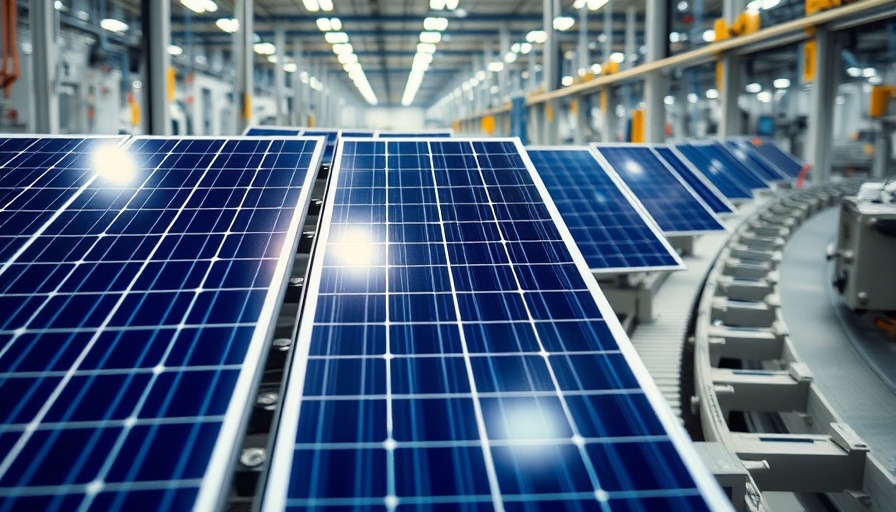
Trump’s Policy Shift: A Hazardous Impact on Clean Energy Jobs
Over the last few years, clean energy in the United States experienced a vibrant growth spurt, seeing widespread investments and job creation that seemed unstoppable. Yet, following Donald Trump’s reelection in 2024, stark changes have emerged. Reports indicate that his administration's policies have threatened or destroyed over 62,000 jobs, raising significant concerns about the nation’s green future.
The Numbers Speak: Job Losses and Economic Implications
According to a report by Climate Power, a shocking 95 clean energy projects have been delayed or canceled, amounting to an eye-watering loss of $71.24 billion in potential investments. These staggering figures signal not only job losses but widespread economic uncertainty. As companies reconsider future investments, the ripple effect could lead to even more job losses across the economy.
Understanding the Threat: Economic Policies and Clean Energy
Trump’s administration has enacted a series of executive orders and tariffs that some argue are reminiscent of a decline in U.S. manufacturing jobs. Lori Lodes, Executive Director of Climate Power, emphasizes that these actions pose a threat to hundreds of thousands of good-paying jobs while simultaneously disrupting energy costs and pushing manufacturing overseas. These shifts threaten the very foundation of clean energy initiatives that are crucial for sustainable economic growth.
Looking Back: Clean Energy’s Strong Foundation Prior to 2024
Before the recent policy changes, the U.S. experienced its most substantial expansion of factory construction driven by clean energy tax credits established in the Inflation Reduction Act of 2022. This legislative framework fueled investments in sectors such as electric vehicle production and solar panel manufacturing, leading to the creation of 400,000 new jobs. As a result, states like Georgia reported billions in private investments across various energy sectors.
Future Predictions: What’s Next for Clean Energy?
Experts are now sounding the alarm about the potential long-term effects of Trump's policies. With over 399,000 jobs currently at risk, the clean energy sector could face a significant downturn if legislative actions continue to roll back or repeal essential tax credits. This could hamper construction efforts, reduce job growth further, and propel the U.S. to be at a competitive disadvantage against nations that prioritize clean energy.
Understanding the Broader Implications and Local Relevance
The geopolitical landscape and economic strategies underscore a crucial reality: clean energy not only represents a pathway toward sustainability, it is also pivotal for national security and economic strength. As policy changes unfold, instilling a sense of urgency in supporting clean energy initiatives is vital for the local and global community.
Final Thoughts: Take Action in Support of Clean Energy
Even amid challenges, there is a remarkable opportunity for individuals to advocate for cleaner, sustainable energy solutions that protect jobs and the environment. Whether advocating for policy changes, investing in clean energy sources for personal use, or supporting local green initiatives, every action can contribute to creating a greener future.
As concerned citizens, you have the power to influence the future of clean energy in America. Invest your time and resources toward supporting policies and initiatives that endorse renewable energy! Together, let’s work toward a sustainably powered future that prioritizes both our economy and our planet.
 Add Row
Add Row  Add
Add 




Write A Comment